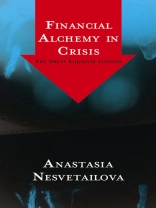In July 2007, the combination of a seemingly unstoppable rise in house prices and bullish banks swimming in liquidity meant that almost anyone could get a mortgage in the UK or US. Little more than a month later the supply of credit dried up practically overnight, leaving the world wondering how bank liquidity could suddenly vanish.
In Financial Alchemy, Anastasia Nesvetailova shows that this liquidity never actually existed. The rise of sophisticated financial instruments create...
Tabela de Conteúdo
Introduction. The End of a Great Illusion
1. The Stages of the Meltdown
2. The Tale of Northern Rock: Between Financial Innovation and Fraud (Anastasia Nesvetai...
Sobre o autor
Anastasia Nesvetailova is the author of Financial Alchemy in Crisis: The Great Liquidity Illusion (Pluto, 2010) and Fragile Finance: Debt, Speculation and Crisis in th...












